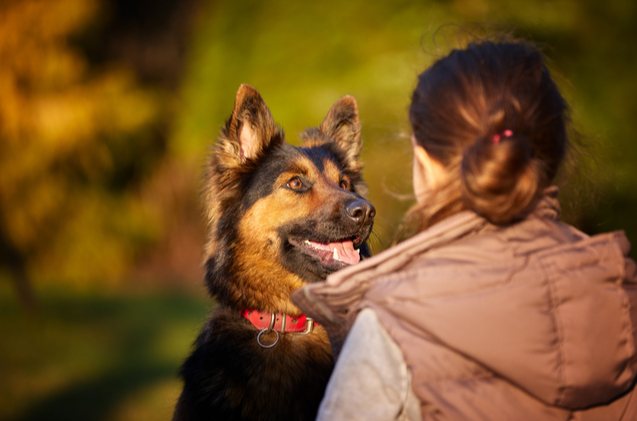Study Shows Dogs Most Likely Our Oldest Companions

The analysis suggests that dogs were domesticated before any other known species of animal to be so, and that domestication can be traced back 11,000 years.
Dr. Pontus Skoglund is the co-author of the study and group leader of the Ancient Genomics Laboratory at London’s Crick Institute. In an interview with BBC, he said that dogs are really unique when we think about it. For a group of people who were still hunter-gatherers to domesticate a wild carnivore (at that time) is pretty frightening and amazing. He said he and his team wanted to know what motivated people to do that–to risk their lives as they befriended wolves.
We know that to some extent, the genetic patterns of dogs somewhat mirror those of humans because as people moved, they took their dogs with them. Canines are believed to have been widespread across the northern hemisphere and split into five different types. Even with expansion of European dogs during the colonization of the world, traces of indigenous breeds are still surviving today in Africa, Asia, Oceana and the Americas.
Related: Canine Family Tree Maps The Evolution Of Dogs
Still, there are some major differences in genetics. Early European dogs seemed to originate from two very different and distinct populations–Siberian Dogs and Near Eastern Dogs. The study’s findings revealed that somewhere along the onset of the Bronze Age, a single dog lineage spread and replaced all other dog populations on the continent. There is no genetic pattern counterpart for the people from Europe.
Dr. Anders Bergström is the lead author and post-doctoral researcher of the study. He said that looking back more than four or five thousand years, Europe was very diverse when it came to dogs. Today, the European dogs we see show very different shapes and forms, which is interesting in that they genetically come from a very tiny subset of dog diversity that used to exist.
An international team looked at the whole genomes of 27 ancient dog remains that were associated with different archaeological cultures. They then compared those to each other and to modern dogs. They found that breeds like the south African Rhodesian Ridgeback and the Mexican Chihuahua and Xoloitzcuintli still had genetic traces of indigenous dogs from those regions.
When it came to the ancestry of dogs from East Asia, there was more complexity. Many Chinese breeds seemed to be distantly related to animals like the New Guinea Singing Dog and the Australian Dingo, though others came from the Russian Steppe and Europe. The ability to migrate back and forth in those regions most likely is the reason for this diversity.
Dr. Greger Larson is also a co-author from the University of Oxford who said that the ancient dog DNA shows just how far back our shared history goes, and proves that dogs are our oldest and closest animal partners.
Related: Canines Evolved a Special Muscle To Make Those Disarming Puppy Dog Eyes Appear
Dr. Skoglund said that dog history is so dynamic that it’s hard to read much into their DNA. Their findings suggest all dogs derive from a single wolf population, or maybe a few closely related ones, and were most likely tamed as wolves sniffing for food likely ventured into human camps. As they were slowly tamed, dogs could very easily have served humans as guards or hunting partners.

More by Lori Ennis























